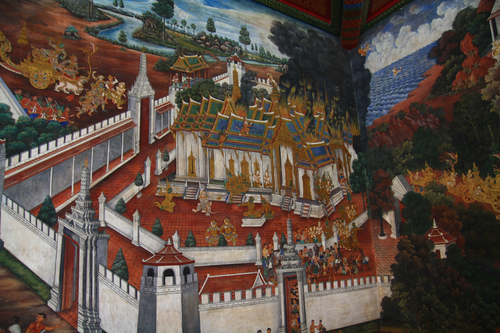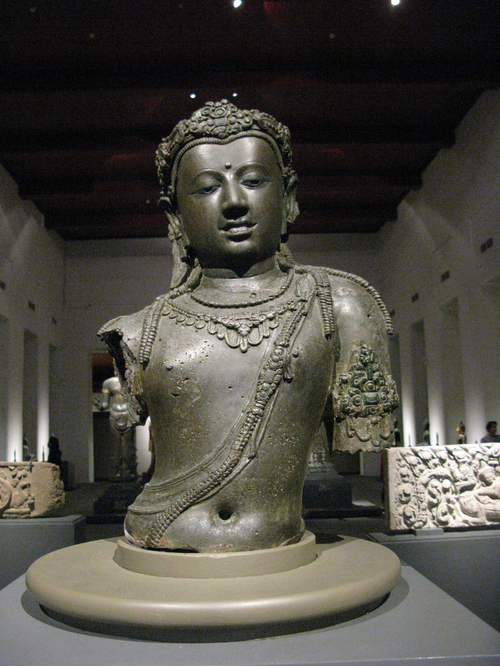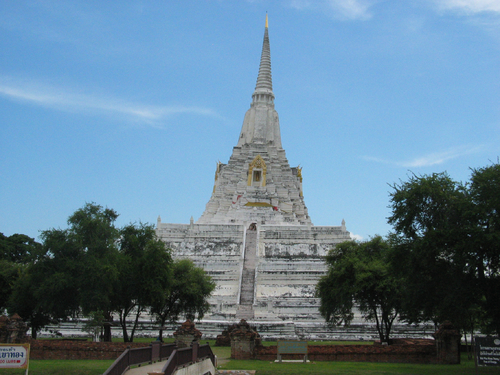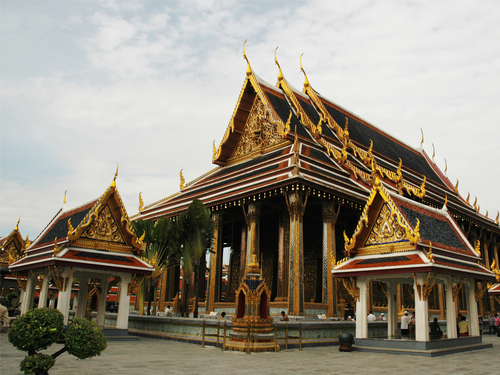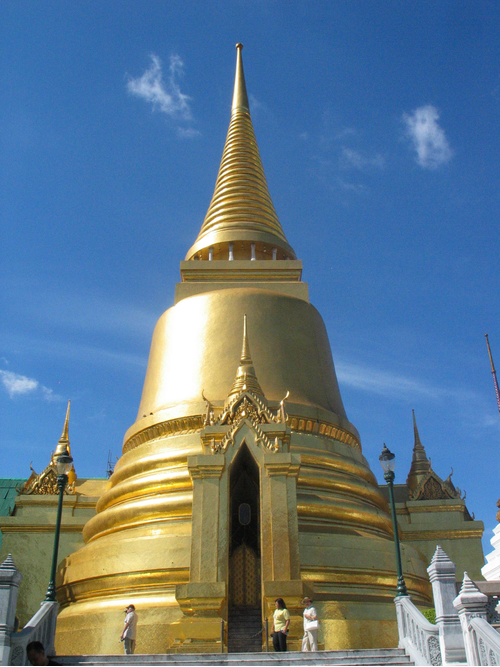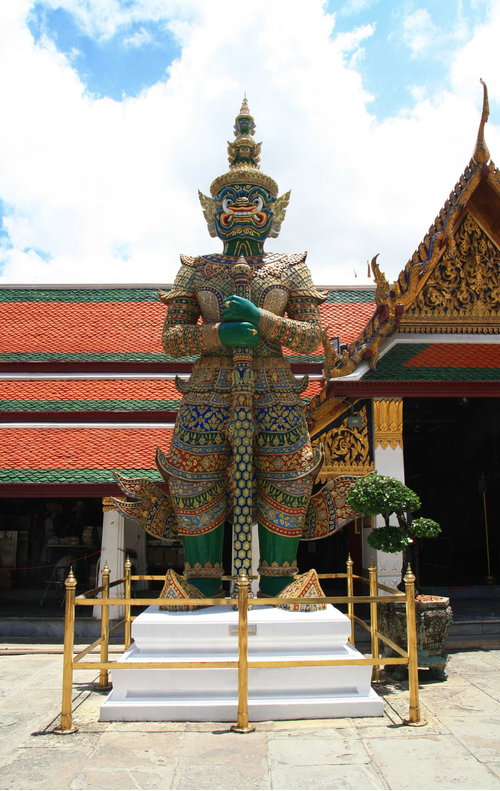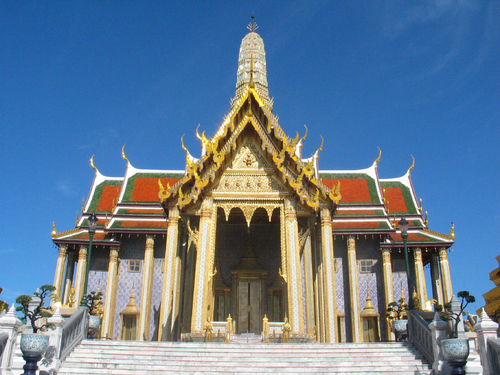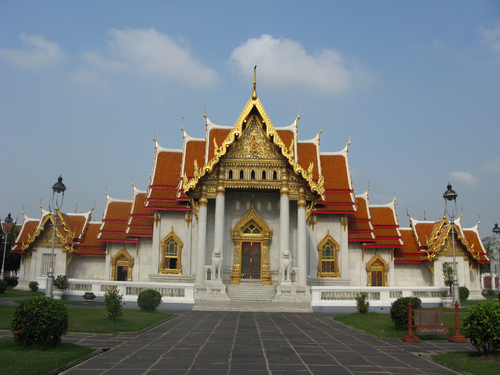Arts in Southeast Asia
ฐานข้อมูลศิลปกรรมในเอเชียตะวันออกเฉียงใต้
ศิลปกรรมยอดนิยม
Most Popular
ศิลปกรรมล่าสุด
Latest
Minaret of Masjid Kampong Kling
The Southeast Asian-styled mosques are different from Indian or Persian masjids. The mosque has a square plan with 4 pillars supporting the sloping roof with the wooden beam supporting the tile roof without any dome. Other interesting point is the minaret that has stacked body with the Chinese sloping roof at the top. The shape of the minaret is similar to Chinese pagoda. At the same time, the minaret is also look alike the Dargarh type tower in Nagapattinam in South India
Dutch Colonization Period
17th – 18th century
Architecture
SculptureLintel
Lintel is a piece of architecture found in Khmer art. It is always mounted on the entrance door frame. The Lintel in the picture belongs to the Prei Kmeng Art which leads to Kampong Phra Art. It is characterized by the curved line which is drawn in a single straight line in the center of the lintel with the picture of tokens appear in the center of the curve line. This style belong to the Prei Kmeng Art. However, the tokens have been transformed into a leaf pattern which is identical with the pattern at both ends of the Lintel. This leaf pattern is later found its fame in the Kampon Phra Art.
ArchitectureBu Pya
The style of this stupa is in the heaped-grain-liked design as the Aṇḍa is elongate. The spire is in simple cone shape. As the characteristics of this Stupa is closely similar to Sri Ksestra Stupa, such as Payama and Bo Bo Gyi, this stupa seems to predate King Anawratha.
ArchitecturePitaka Thiek
Pitaka Thiek is the most ancient example of Phyathat in Burmese art. This square temple comprises the thickly walled body supporting the series of sloping roofs. The roofs are quite squat comparing to the elongate ones in Mandalay period. It is difficult to prove whether this temple belongs to the reign of Anawratha or not. However, the style of this temple reveals that this temple is dated to the early period of Pagan Art.
ArchitectureManuha
Manuha is the good example of the image-house or Paṭimāghara in Early Pagan Art. The temple comprises four attached image-houses, including three for sitting Buddha images and one for the reclining Buddha.
ArchitectureNanPaya
Nanpaya is one of the earliest temples in Pagan art. There are several early characteristics including the horseshoe-arched decorated Śikhara spire which is similar to that in Indian art. The lattice window indicates the concept of the “dim interior” which was popular during the early Pagan art. Inside the temple, there are 4 columns supporting the spire. On these columns there are the depictions of Brahma at every side, the most unique character of this temple. The style of the Śikhara as well as the motif are datable to the early Pagan art.
ArchitectureShwezigon
The Stupa comprises the stepped triple bases decorated by terracotta plaques depicting Jatakas. These bases provide the circumambulatory paths as the staircases in every direction. At the corner are the groups of miniature Stupa. The bell-shaped Anda is punctuated be the band and the triangular motifs. The Anda is topped by the rings of Chatravali without any Harmika. The lotus is inserted between Chatravali and the banana-liked bud. The shortness of banana-liked bus is a characteristic of Pagan art. This Stupa became the prototype for other Stupa in Pagan and the later periods. The style of this Stupa corresponds to the historical evidence of the date of construction of this Stupa.
ArchitectureShwesandaw
This stupa is supported by the series of five multi-angled square bases which is beyond the number of the same element of Shwezigon. The bases are punctuated by the staircases at the cardinal directions leading to the circumambulatory paths on the top of every step. The bell-shaped element is quite small as the bases are very high. The square throne on the top of the bell-shaped element is omitted, typical to Burmese stupa . The spire comprises the series of rings (Chatravali) and the lotus-bud-liked pinnacle. As the bell-shaped element is too small, the later Zedi followed the convention of triple bases, as Shwezigon, instead of the series of five.
ArchitectureLawkananda
The stupa composes of triple bases in octagonal plan. Each of them is decorated with panels and punctuated with staircases leading to the circumambulatory path. The bell-shaped element is ornamented with bands in the centre and the triangular patterns at the top, typical to Burmese art. This stupa is categorized to “Pyu-influenced Stupa” because the bell-shaped element is quite elongate. The square throne on the top of the bell-shaped element is omitted, typical to Burmese stupa. The spire comprises the series of rings (Chatravali) and the lotus-bud-liked pinnacle, which is the sharing character in both Pyu-influenced stupa and the pure-Burmese stupa. Pyu-influenced stupa is the group of stupa which co-existed with the Pure-Burmese Stupa during the reign of King Anawratha.



